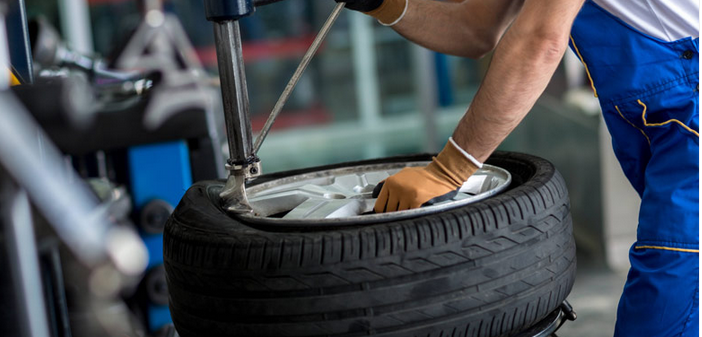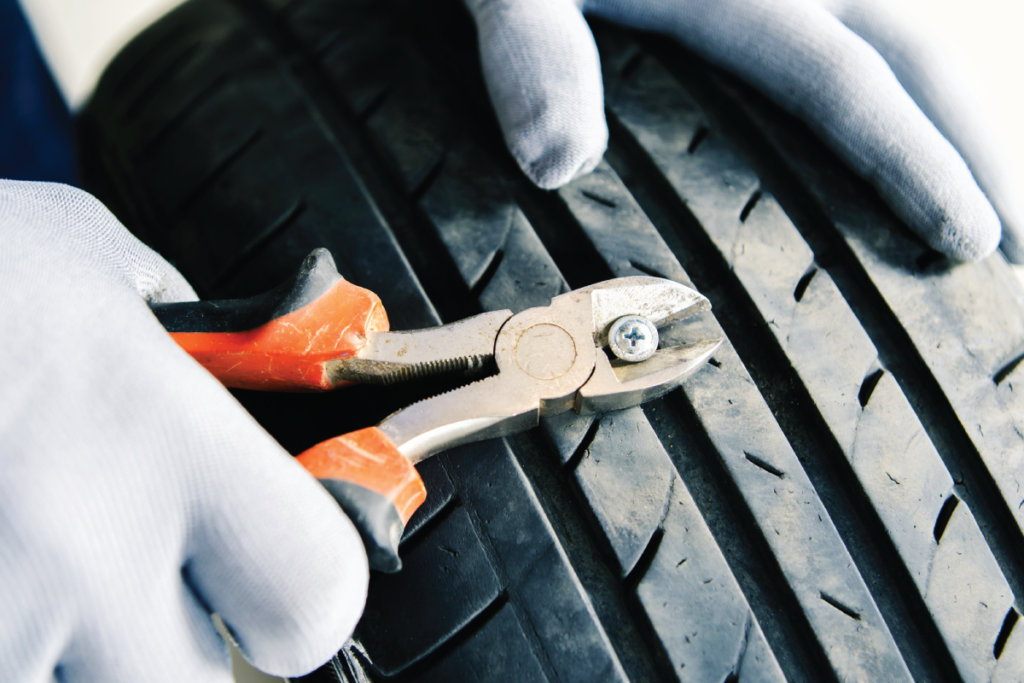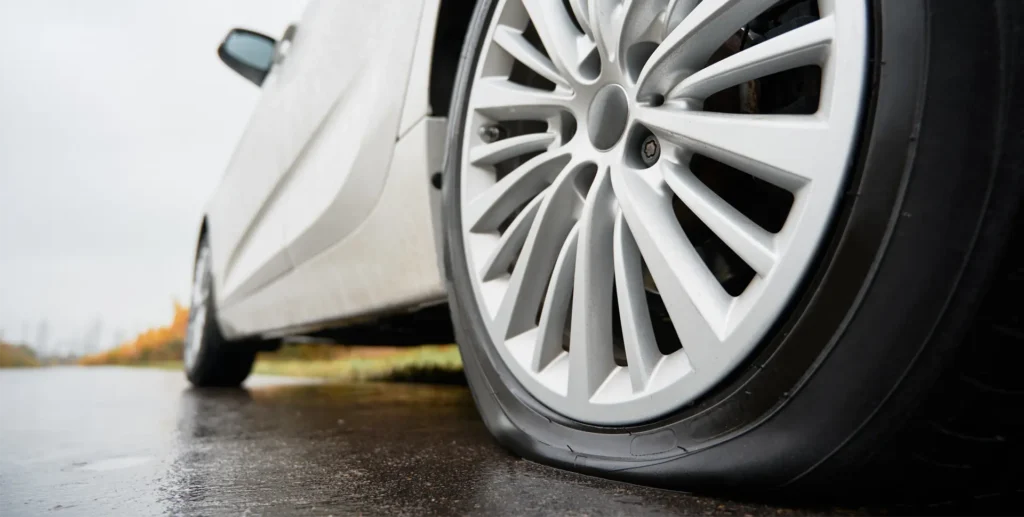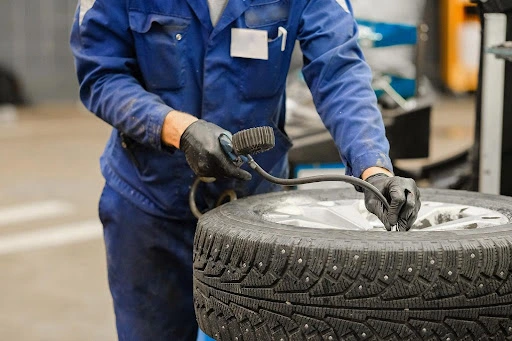
Introduction: Don’t Ignore the Warning Signs
Driving with a puncture tire in the UAE’s scorching heat and rugged terrains can be risky. While minor punctures can often be repaired, some damages are beyond fixing. Knowing when to replace instead of repair can save you from dangerous blowouts or costly roadside emergencies.
If you’ve been searching for “fix flat tire near me” or “tire puncture repair near me”, this guide will help you decide whether a simple repair will suffice or if it’s time for a full replacement. Let’s dive into the unmistakable signs that your tire is crying out for a change!
1. The Dreaded Visible Puncture: More Than Just a Tiny Hole
A small nail or screw might seem harmless, but not all punctures tire are created equal. If the hole is larger than ¼ inch, most tire shops won’t repair it due to safety risks. Additionally, punctures on the sidewall are a death sentence for your tire—they cannot be safely fixed.

If you notice a significant puncture, skip searching for “tire plug near me” and start looking for “tire change near me” instead. A professional will confirm whether a repair is possible or if a replacement is the only safe option.
2. Frequent Air Loss: The Silent Killer of Tires
Does your tire keep losing air despite multiple repairs? Constant deflation means the puncture tire has internal damage or a faulty seal. This issue often arises from hidden punctures, bead leaks, or valve stem problems.
If you’re tired of reinflating your tire every few days, it’s time to stop searching for “flat tyre repair near me” and invest in a new tire. Persistent air loss is a clear indicator that your tire’s structural integrity is compromised.
3. Bulges & Bubbles: The Ticking Time Bomb
Sidewall bulges or bubbles occur when the inner layers of the tire are damaged, often from hitting potholes or curbs. These weak spots can burst unexpectedly, especially at high speeds on UAE highways.
If you spot a bulge, don’t risk driving—search for “mobile tyre fitting near me” or “mobile tire service near me” immediately. A replacement is the only solution, as no repair can fix this kind of puncture tire.
4. Cracks & Dry Rot: When Age Takes Its Toll
Extreme UAE heat accelerates tire aging, leading to dry rot—visible cracks on the sidewall or tread. These cracks weaken the tire, increasing the risk of a sudden blowout.
If your tires are over five years old (check the DOT code), searching for “tyre puncture repair near me” won’t help. Dry rot means it’s time for new tires before they fail catastrophically.
5. Excessive Vibration: Your Car’s Cry for Help
While some vibration is normal, excessive shaking—especially at high speeds—could mean internal tire damage or uneven wear. This often happens after a puncture tire has been improperly repaired or left unchecked.

If balancing doesn’t fix the issue, stop looking for “tire repair near me” and consider a replacement. Ignoring this could lead to suspension damage or a dangerous blowout.
6. Tread Depth Below 2/32”: The Legal (and Safety) Limit
Worn-out tread reduces grip, increasing stopping distances and hydroplaning risks. The UAE’s sudden rains make this especially dangerous. Use the “coin test”—if the tread doesn’t reach Lincoln’s head on a penny, it’s time for new tires.
Instead of searching for “mobile tire repair near me”, prioritize safety and get a full set of puncture tire if the tread is too low.
7. Multiple Puncture tire: One Too Many Repairs
Most tires can handle 2-3 repairs if properly spaced. However, multiple punctures weaken the structure. If your tire has several patches, it’s no longer safe—even if you keep finding “tire puncture repair near me” options.
A heavily repaired tire is a hazard. Replace it before it fails when you least expect it.
8. Exposed Cords or Steel Belts: The Point of No Return
If you see metal wires or fabric cords poking through the tread, your tire is beyond saving. This level of wear means the tread has completely worn down, making blowouts imminent.

Don’t waste time looking for “fix flat tire near me”—this tire is done. Replace it immediately.
9. Uneven Wear Patterns: A Sign of Bigger Problems
Cupping, feathering, or one-sided wear indicates alignment issues, suspension problems, or improper inflation. If wear is severe, even searching for “puncture tyre repair near me” won’t help—the tire must be replaced.
Fix the underlying issue (alignment, suspension) before installing new tires to prevent repeat damage.
10. Slow Leaks That Won’t Quit: The Hidden Danger
A slow leak might seem manageable, but it often means a small puncture, corroded wheel, or valve leak. If refilling becomes a weekly ritual, the tire is no longer reliable.
Instead of constantly searching for “flat tyre repair near me”, invest in a new tire for peace of mind.
11. Impact Damage from Rough Roads
UAE’s roads can be harsh, leading to bent rims or internal tire damage. If you’ve hit a deep pothole and notice handling issues, the tire may have internal separation.
Skip “tire plug near me”—impact damage usually requires a full replacement.
12. The Tire is Already Patched Near the Sidewall
Repairs near the sidewall are unsafe due to flexing. If an old patch is failing, don’t re-repair it—replace the tire entirely.
13. Frequent Flats: A Sign of Weakness
If you’re constantly dealing with flats, the tire’s structure is compromised. Stop searching for “mobile tire service near me”—get a new tire instead.
14. Age Matters: Even If It Looks Fine
Tires degrade over time, even with good tread. If yours are over six years old, replace them regardless of visible wear.
15. When the Repair Shop Says ‘No’
If multiple shops refuse to fix your tire, take the hint—it’s unsafe. Stop looking for “tire repair near me” and get a replacement.
Conclusion: Safety First—Replace When in Doubt
A puncture tire can often be repaired, but sometimes replacement is the only safe choice. If you notice any of these signs, don’t delay—search for “mobile tyre fitting near me” or “tire change near me” and drive with confidence. Your safety (and your car’s performance) depends on it!

